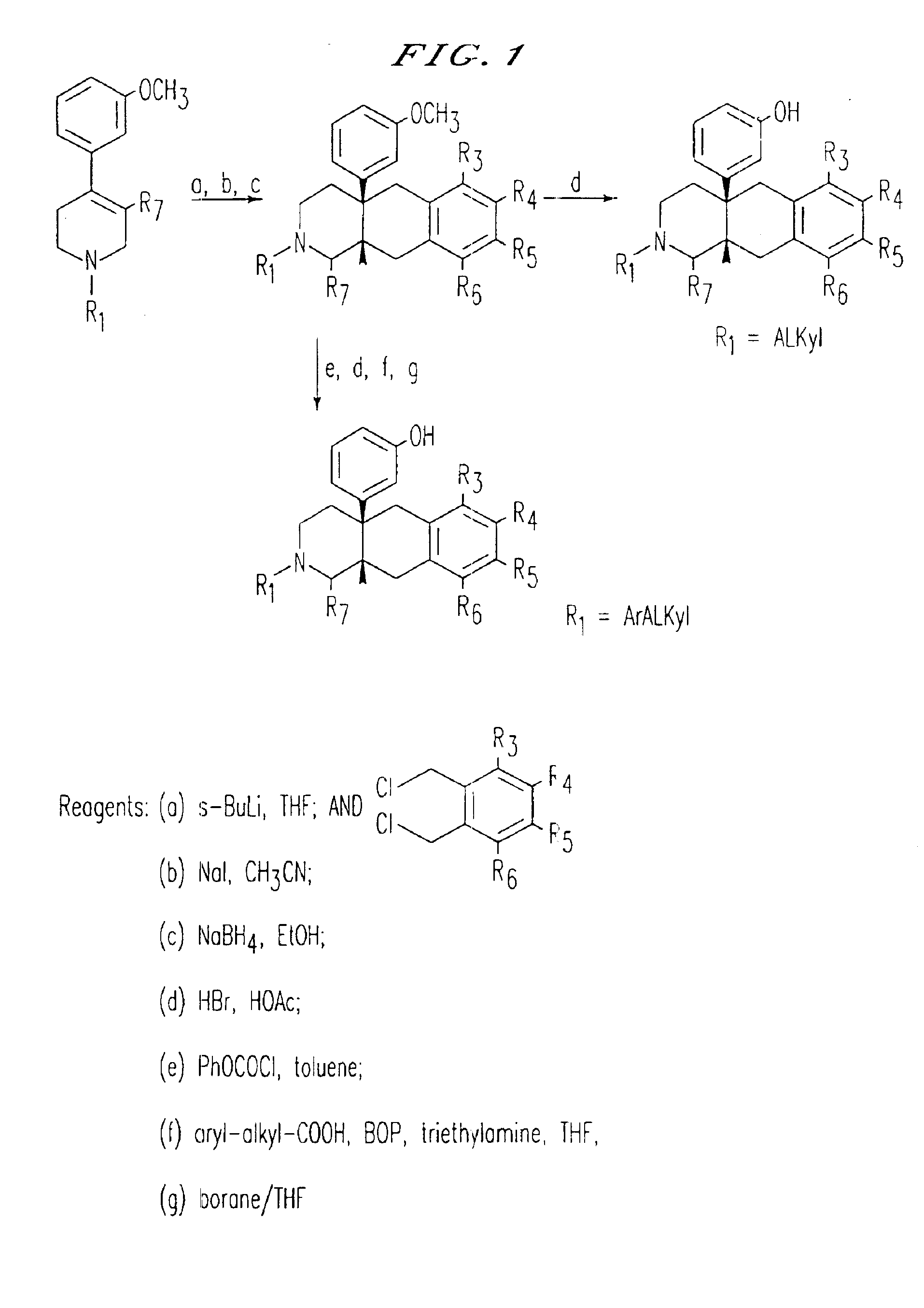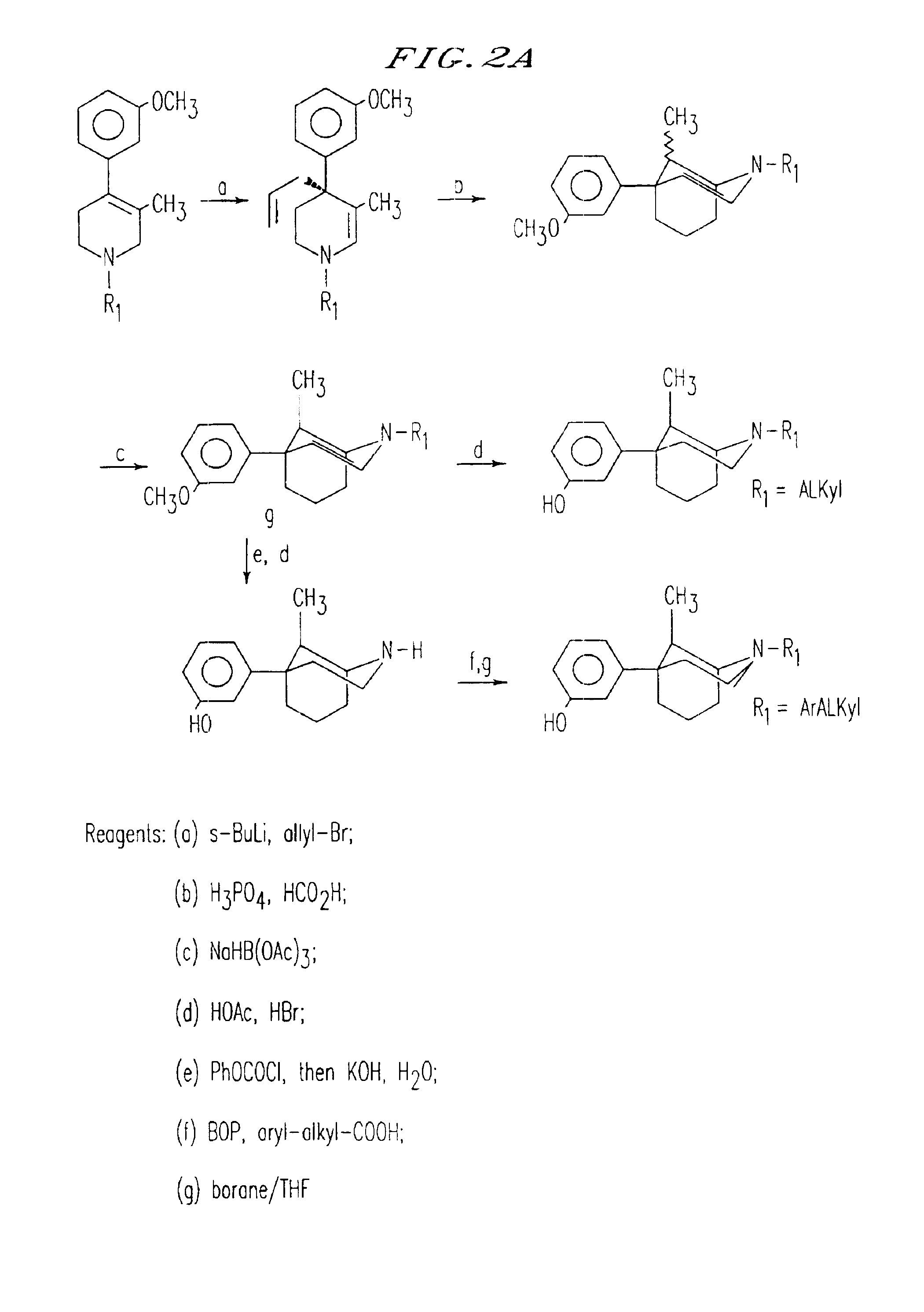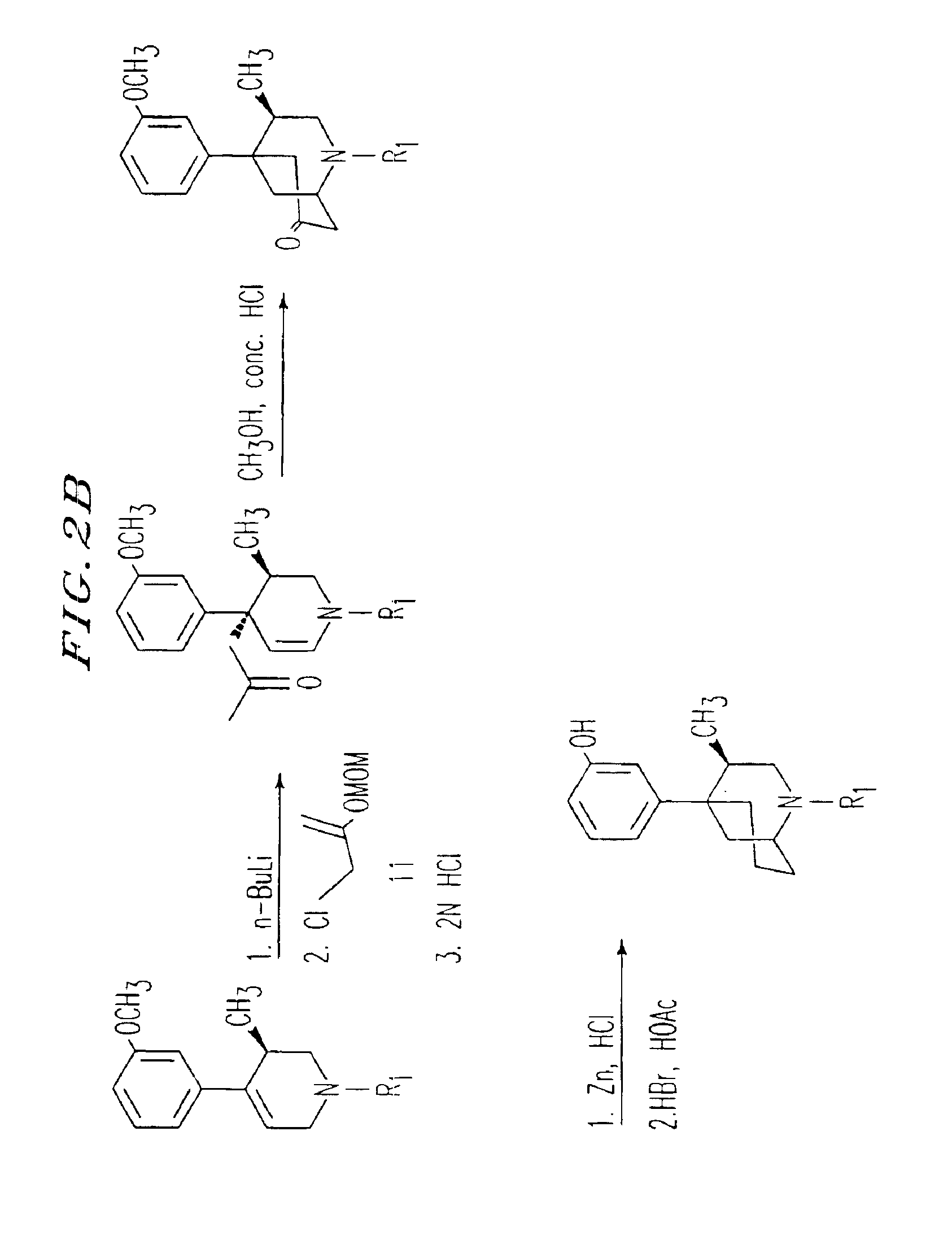Opiate compounds, methods of making and methods of use
a technology of opioid receptors and compounds, applied in the field of new opioid receptor antagonists and agonists, can solve the problems of physical dependence, respiratory depression, gastrointestinal motility, etc., and achieve the effect of high affinity
- Summary
- Abstract
- Description
- Claims
- Application Information
AI Technical Summary
Benefits of technology
Problems solved by technology
Method used
Image
Examples
example 1
Identification of Opiates Selective for the Opioid Receptors
Summary
[0133]A three-component library of compounds was prepared in parallel using multiple simultaneous solution phase synthetic methodology. The compounds incorporated a (+)-(3R,4R)-dimethyl-4-(3-hydroxyphenyl)piperidine group as one of the monomers. The other two monomers, which included N-substituted or unsubstituted Boc protected amino acids and a range of substituted aryl carboxylic acids, were selected to add chemical diversity. Screening of these compounds in competitive binding experiments with the kappa opioid receptor selective ligand [3H]U69,593 led to the identification of a κ opioid receptor selective ligand, N-{(2′S)-[3-(4-hydroxyphenyl)propanamido]-3′-methylbutyl}-(3R,4R)dimethyl-4-(3-hydroxyphenyl)piperidine (8, RTI-5989-29). Additional SAR studies suggested that 8 possesses lipophilic and hydrogen bonding sites that are important to its opioid receptor potency and selectivity. These sites appear to exist p...
example 2
N-substituted (±)-1,2,3,4,4a,5,10,10a-octahydro-4a-(3-hydroxyphenyl)-10a-methylbenzo[g]isoquinolines
Summary
[0218]Potent, opioid receptor pure antagonist activity has been demonstrated in the N-substituted (±)-1,2,3,4,4a,5,10,10a-octahydro-4a-(3-hydroxyphenyl)-10a-methylbenzo[g]isoquinolines, 7 and 8 (FIG. 8). These compounds share many of the characteristics identified with the phenylpiperidine antagonists including N-susbstituent mediated potency and a lack of N-susbstituent mediated antagonism. Also, like the phenylpiperidines, 7 and 8 display a strong preference for mu and kappa versus delta opioid receptor binding. Unlike the phenylpiperidines however, the benzoisoquinoline system displays a stronger preference for the kappa versus the mu opioid receptor and a lower overall potency relative to typical trans-3,4-dimethyl-4-(3-hydroxyphenyl)piperidine antagonists. Together this data suggests a common site of action within the opioid receptors for compounds 7 and 8 and the trans-3,...
example 3
Summary
[0235]Two sets of novel opioid receptor antagonist pharmacophores have been prepared and demonstrated from a model of opioid antagonist binding. One is based on a rigid 5-phenylmorphan nucleus and the other on a more flexible benzoisoquinoline nucleus. Using modifications of these systems and by comparisons with the related trans-3,4-dimethyl-4-(3-hydoxyphenyl) piperidines, provides strong evidence supporting the hypothesis that this class of antagonist binds the opioid receptors in a phenyl equatorial mode and that the trans-3-methyl substituent (phenyl piperidine numbering) is an important element for conversion of agonists into antagonists.
[0236]The β-5-(3-hydroxyphenyl) morphans were prepared by the method shown in FIG. 11. Deprotonation of the known compound 10 with sec-butyl lithium followed by alkylation with allyl bromide cleanly provided intermediate 11 in quantitative yield. This compound was then cyclized provide 12 in 90% yield ...
PUM
| Property | Measurement | Unit |
|---|---|---|
| volume | aaaaa | aaaaa |
| pH | aaaaa | aaaaa |
| concentrations | aaaaa | aaaaa |
Abstract
Description
Claims
Application Information
 Login to View More
Login to View More - R&D
- Intellectual Property
- Life Sciences
- Materials
- Tech Scout
- Unparalleled Data Quality
- Higher Quality Content
- 60% Fewer Hallucinations
Browse by: Latest US Patents, China's latest patents, Technical Efficacy Thesaurus, Application Domain, Technology Topic, Popular Technical Reports.
© 2025 PatSnap. All rights reserved.Legal|Privacy policy|Modern Slavery Act Transparency Statement|Sitemap|About US| Contact US: help@patsnap.com



